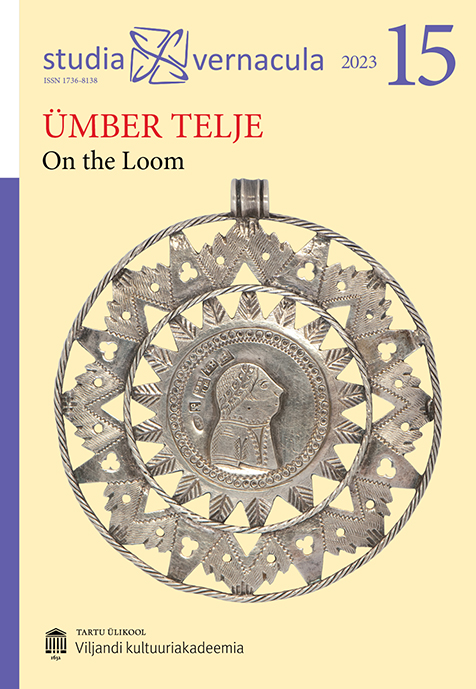Rahvarõivakool Chicagos. Veebi vahendusel / National clothing course in Chicago, online
DOI:
https://doi.org/10.12697/sv.2023.15.219-241Abstract
Between January 2021 and May 2023, the Estonian Cultural Society in Chicago collaborated with the NGO Rahvarõivas and provided a national clothing course for Estonians in the USA. The idea came from the Estonians in Chicago, building on NGO Rahvarõivas’ experience in providing national clothing schools since 2009. To unite the domestic and expatriate Estonian communities in understanding the intricate tradition of Estonian folk costumes, this comprehensive course spanned both theoretical and practical elements. The online format allowed participants from multiple U.S. states to join.
This initiative attracted 12 people between the ages 13 to 76. Participants came from the states of Connecticut, Georgia, Illinois, Maryland, Washington, Wisconsin, and Massachusetts. At the final presentation, 12 exquisitely crafted ensembles representing 10 Estonian parishes were showcased. While most participants completed one ensemble, some accomplished two or even three sets of garments. The course encompassed 360 academic hours of classroom work, plus independent work. The curriculum was based on the supplementary education program established in Estonia in 2018.
The course objectives were to ensure that both homeland and expatriate Estonian communities have the same understanding of Estonian folk clothing traditions. The curriculum included theoretical lectures from April to June to prepare participants for the practical phase beginning in September.
The organisers and the teachers reviewed the entire curriculum together. Based on the technologies, they tried to anticipate possible obstacles and think of solutions ahead of time. Individual work plans were created, and materials were assembled. The participants who visited Estonia in the summer of 2021 had the opportunity to visit the museums with the teachers and were able to study the historical examples in their sets and determine the correct colors.
The challenge of weaving patterned belts and skirt fabrics was addressed with innovative teaching methods. Video demonstrations, visual aids, verbal explanations, technique demonstrations, and drawn stitching patterns were employed to facilitate learning. The fact that the United States has a different type of loom made weaving the fabric difficult. The course’s most intricate aspect was understanding the weaving’s backside and its loose threads. The linen fabric and other materials were bought from Estonia, examples were made and sent to the USA. More work than usual was done with the preparation of work instructions and creating the outlines.
The last stitches, fitting and dressing properly sessions were already done all together in Chicago this June. This culminated in a presentation of the completed ensembles just a week before Midsummer’s Eve, documented through photographs and videos.
Both students and teachers celebrated the joy of completing the garments. The teachers gained great and necessary experience. The students plan to continue the project by introducing the finished garments to other Estonian communities in North America, thereby further promoting Estonian culture and traditions.
This endeavour demonstrates the significance of adapting traditional practices to the challenges. The emotional and educational impact of this project is evident in the pride and emotions of the graduates, who crafted lasting memories and now plan to extend this legacy by sharing their knowledge and completed sets with other Estonian communities in the United States. The project embodies the enduring strength and unity of the Estonian culture and heritage within and beyond its borders.

